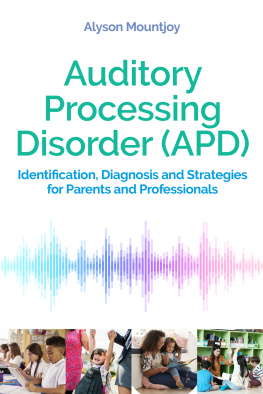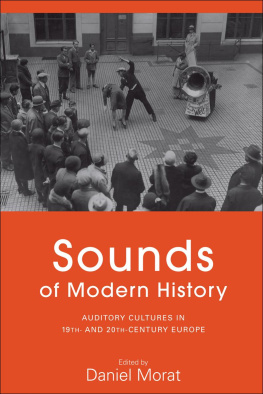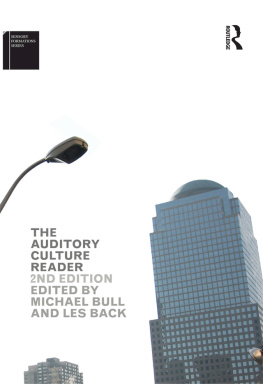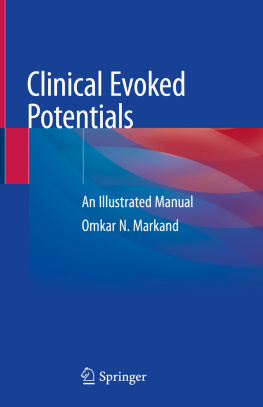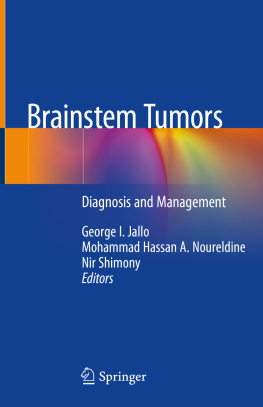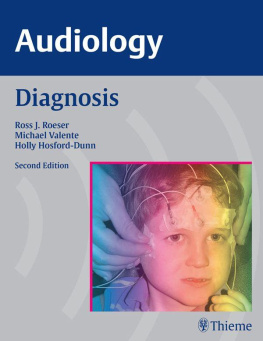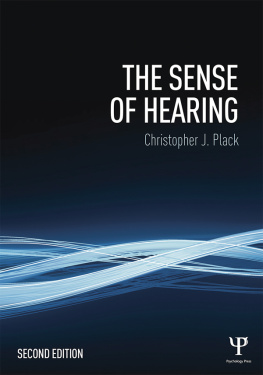Auditory Brainstem Evoked Potentials
Clinical and Research Applications
Editor-in-Chief for Audiology
Brad A. Stach, PhD
Auditory Brainstem Evoked Potentials
Clinical and Research Applications
Ananthanarayan Krishnan, PhD, CCC-A


5521 Ruffin Road
San Diego, CA 92123
e-mail:
Website: https://www.pluralpublishing.com
Copyright 2023 by Plural Publishing, Inc.
Typeset in 10.5/13 Palatino by Flanagans Publishing Services, Inc.
Printed in the United States of America by McNaughton & Gunn
All rights, including that of translation, reserved. No part of this publication may be reproduced, stored in a retrieval system, or transmitted in any form or by any means, electronic, mechanical, recording, or otherwise, including photocopying, recording, taping, Web distribution, or information storage and retrieval systems without the prior written consent of the publisher.
For permission to use material from this text, contact us by
Telephone: (866) 758-7251
Fax: (888) 758-7255
e-mail:
Every attempt has been made to contact the copyright holders for material originally printed in another source. If any have been inadvertently overlooked, the publisher will gladly make the necessary arrangements at the first opportunity.
Disclaimer: Please note that ancillary content (such as documents, audio, and video, etc.) may not be included as published in the original print version of this book.
Library of Congress Cataloging-in-Publication Data
Names: Krishnan, Ananthanarayan, author.
Title: Auditory brainstem evoked responses : clinical and research applications / Ananthanarayan Krishnan.
Description: San Diego, CA : Plural Publishing, Inc., [2023] | Includes bibliographical references and index.
Identifiers: LCCN 2021017661 (print) | LCCN 2021017662 (ebook) | ISBN 9781635502398 (paperback) | ISBN 9781635502527 (ebook)
Subjects: MESH: Evoked Potentials, Auditory, Brain Stemphysiology | Audiometry, Evoked Response | Auditory Diseases, Centraldiagnosis
Classification: LCC RC386.6.E86 (print) | LCC RC386.6.E86 (ebook) | NLM WV 270 | DDC 616.8/047547dc23
LC record available at https://lccn.loc.gov/2021017661
LC ebook record available at https://lccn.loc.gov/2021017662
CONTENTS
I have been teaching auditory electrophysiology to graduate students and conducting research using electrophysiologic measures for over 30 years now. My complaining about the appropriateness of the available textbooks for my classes (in terms of the organization of the content, the appropriate level, the appropriate depth, and the right balance between theory and clinical applications most relevant to the students) has steadily increased over the years. Finally, I thought it was time to stop complaining and do something about it. Thus, this undertaking is an attempt to address my objectives and to stop my decades-long complaining. However, this attempt should not be construed as a negative reflection on several excellent resources already provided by my colleagues in the field.
This book is primarily intended to serve as a prescribed textbook for graduate-level electrophysiology course(s) for AuD and PhD students. However, its contents should also be of interest to researchers using auditory evoked potentials to complex sounds (envelope following response [EFR] and frequency following response [FFR]) to address questions relevant to the neural representation of complex sounds and how they may be altered by experience, training, and hearing impairment. The main aim is to provide an organized, coherent, sufficient, and reasonably up-to-date (but not exhaustive) account of relevant literature about the principles related to the neural bases, response characteristics, and specific clinical and research applications of the auditory evoked brainstem potentials. The goal is twofold: (a) to foster an understanding of how these measures reflect the neuroanatomical and functional organization of the auditory system from the periphery through the brainstem, and (b) to develop an appreciation for the structure-function relationship and the consequences of an impairment on this relationship that may be reflected in these measures. It is my firm belief that such knowledge integrated into the clinical practice is essential to be able to practice at the top of your license, rather than merely be a technician. Finally, the level of technical detail presented was deliberately reduced (without filtering out important information) to encourage the reader to remain focused on learning the essentials of the relevant information. However, inquiring minds can always pursue the listed references to quench their thirst.
The contents are organized in a coherent manner by first providing a sufficient overview of the nature of the neuroanatomical organization of the structures and pathways in the auditory periphery and the brainstem ().
Although my initial intent was to gear the content of this book to a single course limited to the clinical and research applications of the transient auditory brainstem response (ABR), the more expanded content presented is unlikely to be covered in a single-semester course. Thus, this book can be used in a two-course sequence, wherein the first course covers the basic clinical applications (hearing screening, threshold estimation, and the use of ABR in differential diagnosis) and the second course covers the use of ABR in intraoperative monitoring, sustained brainstem responses to complex sounds and their clinical applications, and the use of sustained brainstem responses to complex sounds in research to understand the neural representation of complex sounds in normal and impaired ears.
I would like to thank the multiple reviewers (who provided helpful feedback that has made the final product better), colleagues in the profession, and graduate students who have helped shape this book. I am deeply indebted to my wife Lata Krishnan (sadly, I was not able to convince her to be a coauthor) for painstakingly editing the manuscript. It was a pleasure working with the editorial staff at Plural Publishing (Christina Gunning, in particular, who was patient and helpful), and I appreciate their cooperation during times when my progress was hampered. While I have received quite a bit of help from my colleagues, all omissions and errors that persist are my own.
This book is a product developed during the isolation forced by the COVID-19 pandemic. While the isolation (which trapped me in India) forced me to work on it, encouraged on by my undergraduate classmates (AIISH batch of 1970), I do feel sad about the terrible devastation visited upon (unfortunately continuing to date and postponing a planned trip to India next week) humankind by this pandemic. I fervently hope that we come out of this soon and revert to some semblance of a normal life. Godspeed everyone.
Ravi Krishnan
West Lafayette
April, 2021
Plural Publishing and the author thank the following reviewers for taking the time to provide their valuable feedback during the manuscript development process. Additional anonymous feedback was provided by other expert reviewers.
Samira Anderson, AuD, PhD
Associate Professor


